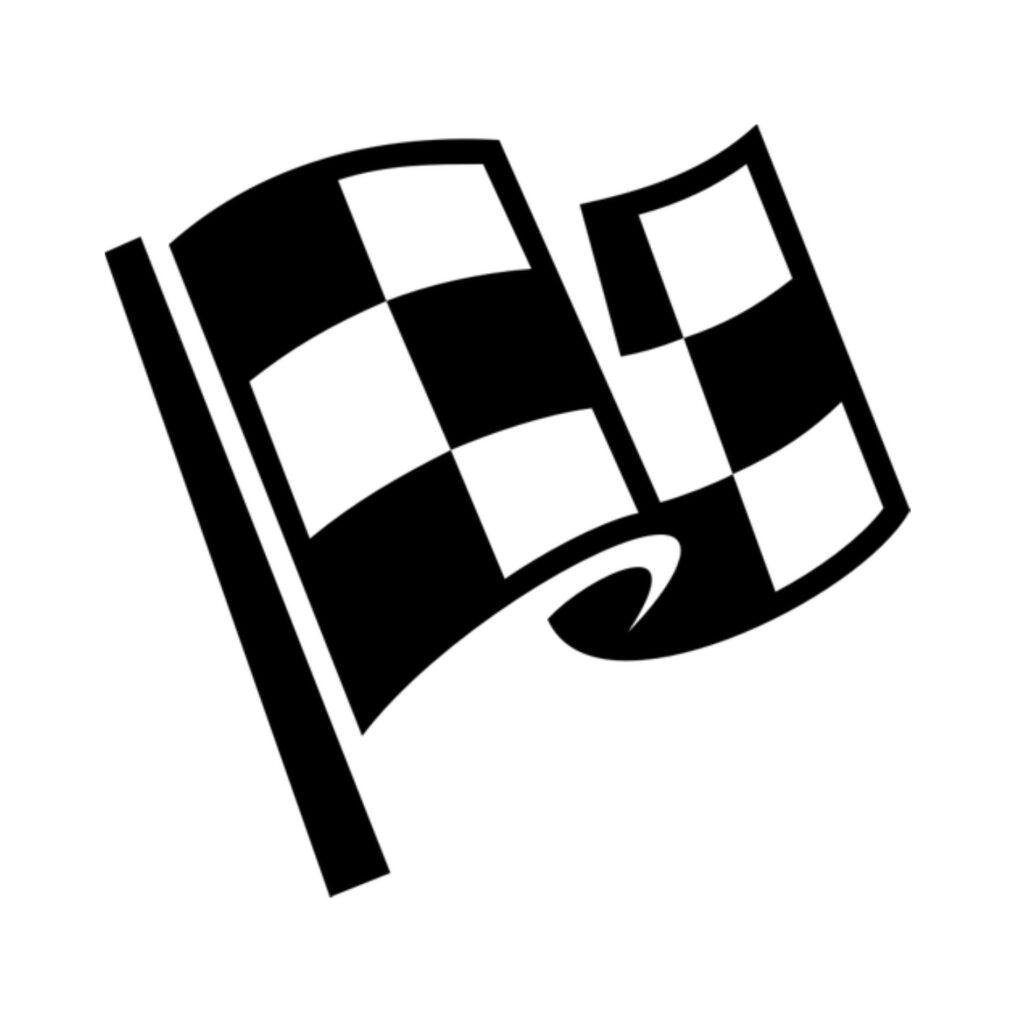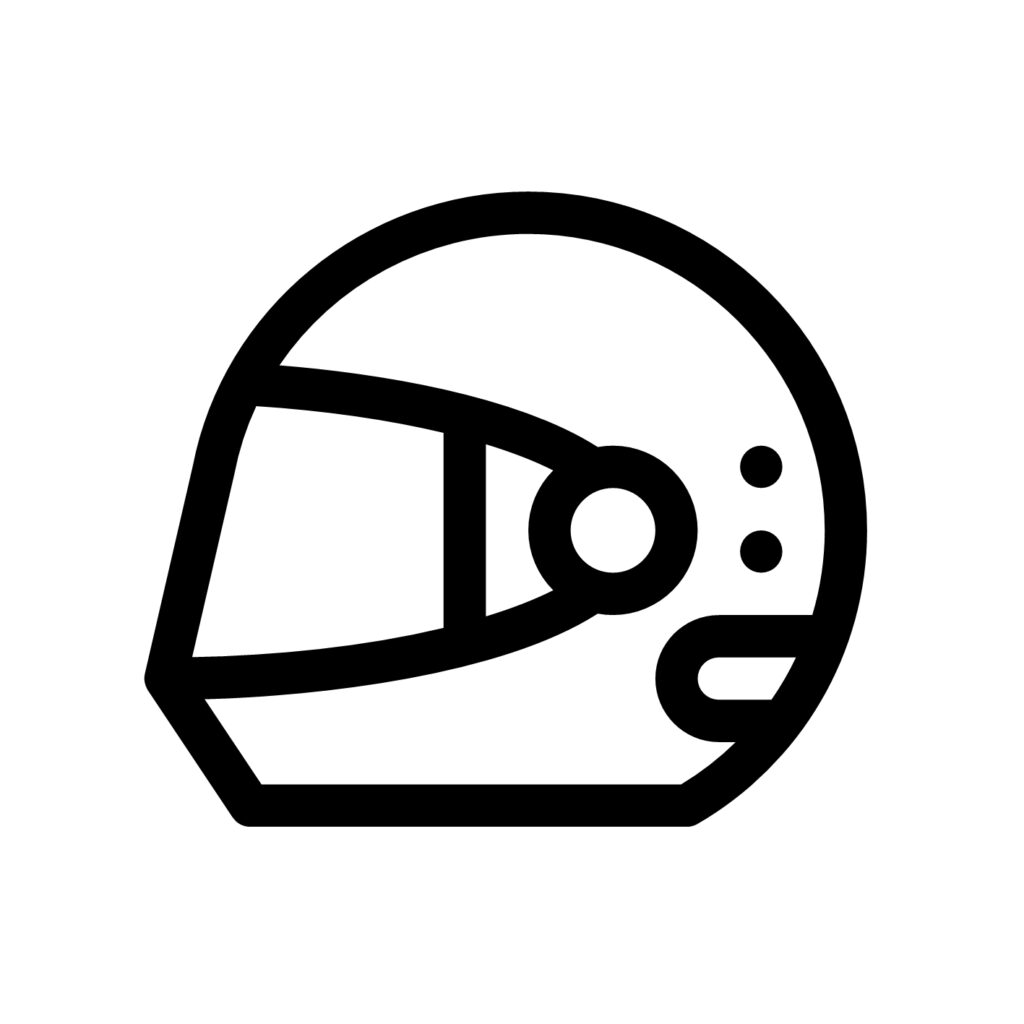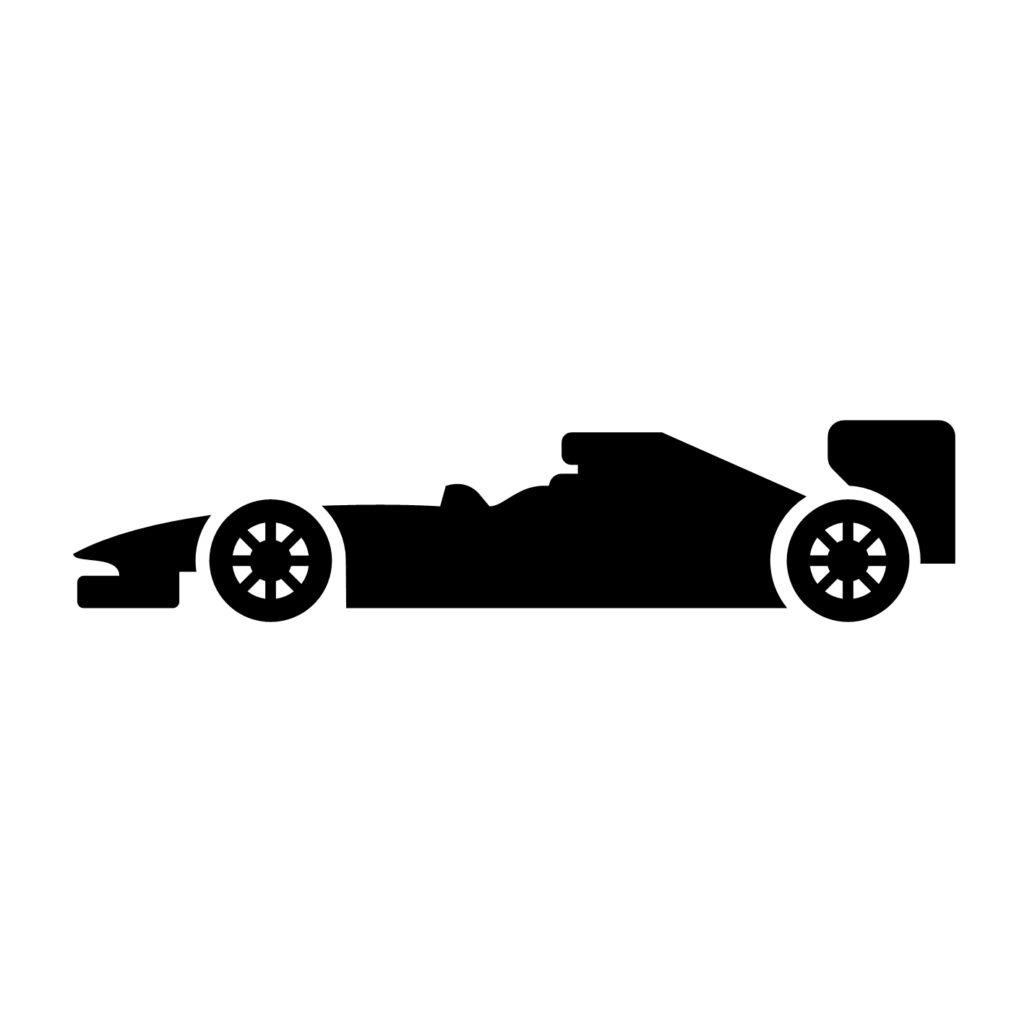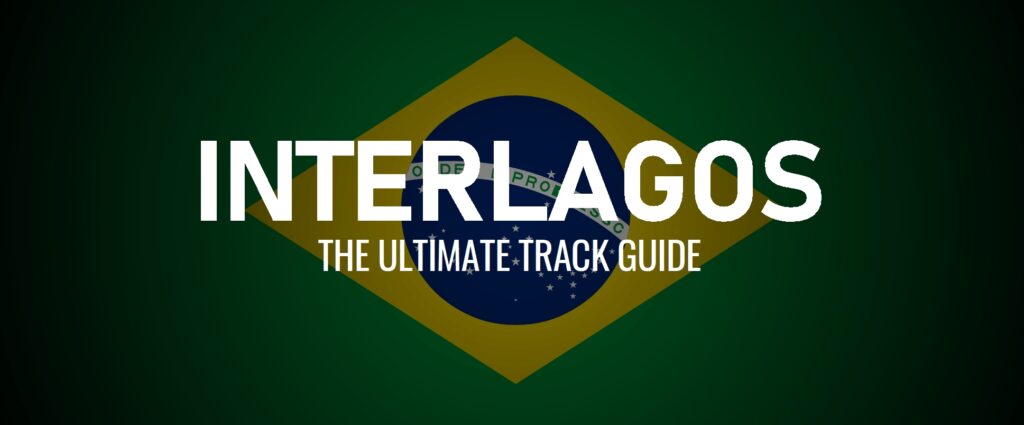
Since its arrival on the calendar in 1973, the Interlagos track in Sao Paulo, Brazil has hosted some dramatic races. The passionate fans together with the old school nature of the track layout always make the Brazilian Grand Prix weekend one to remember.
FIRST F1 RACE | 1973 |
TRACK LENGTH | 2.667 miles |
NUMBER OF LAPS | 71 |
NUMBER OF TURNS | 15 |
MOST POLES | Ayrton Senna, Mika Häkkinen, Rubens Barrichello, Felipe Massa, Lewis Hamilton (3) |
MOST WINS | Michael Schumacher (4) |
The Interlagos track is situated nine miles from the city centre of Sao Paulo. The neighbourhood had originally been plotting a racing circuit back in the 1920s, but this didn’t come to fruition for quite some time. Brazil’s history with motor racing began in 1934, with races on the Gavea circuit in Rio de Janeiro. Sao Paulo itself held a street race in 1936, but this was marred by a crash which resulted in the deaths of six spectators.
The plot of land which Interlagos is situated on – Interlagos meaning ‘between two lakes’ – had been set aside in 1926 for building houses on. However, such was the environment, the plot of land laid empty for years as it was unsuitable for the houses to be built. The financial situation due to the stock market crash in 1929 was also a factor in the area laying dormant. It instead became home to a demanding race track: Interlagos. The idea for a permanent circuit in the area was mooted in 1938, and was built by a construction company named Sanson over the next two years.
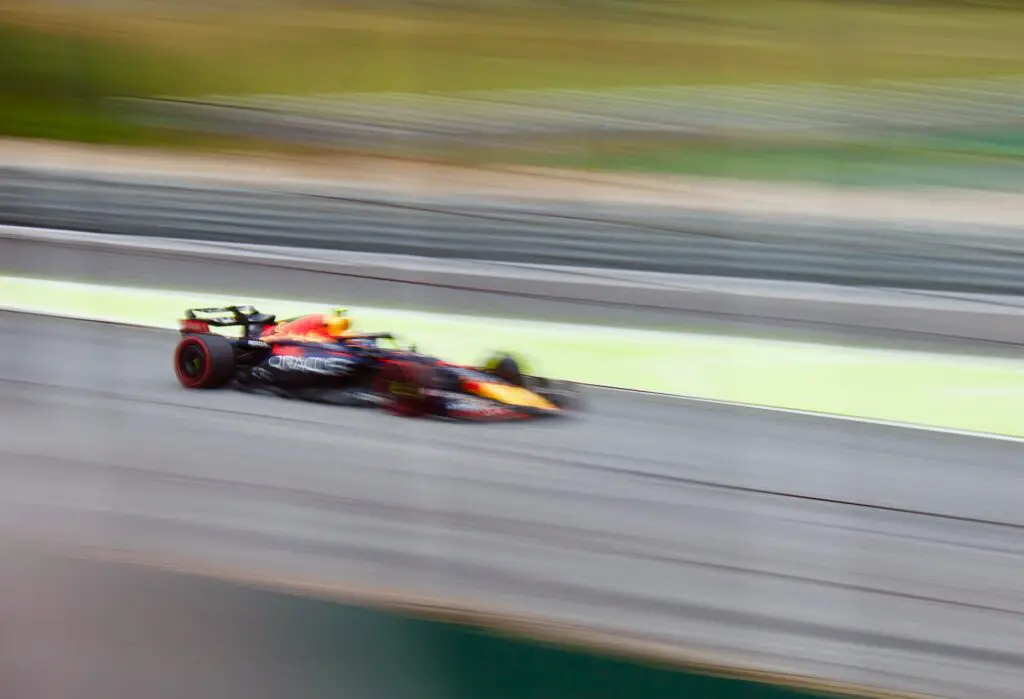
F1’s first venture into Brazil came in 1972 – the same year which the country had their first Brazilian F1 World Champion – and Carlos Reutemann won a non-championship round. The event proved Interlagos’ capability of holding a race, and in 1973 the circuit became home to the Brazilian Grand Prix.
It’s an area where time seems to stand still, though the surrounding Sao Paulo area seems to get slightly more built up with each visit. Elevation changes, with the track dipping down during the mid-part of the course before rising again on to the pit-straight. The pit-straight itself at Interlagos can feel claustrophobic, as it is placed in a dip between the grandstand and the pit-lane, which both have high walls. Interlagos’ pit-lane is one of the longest of the season.
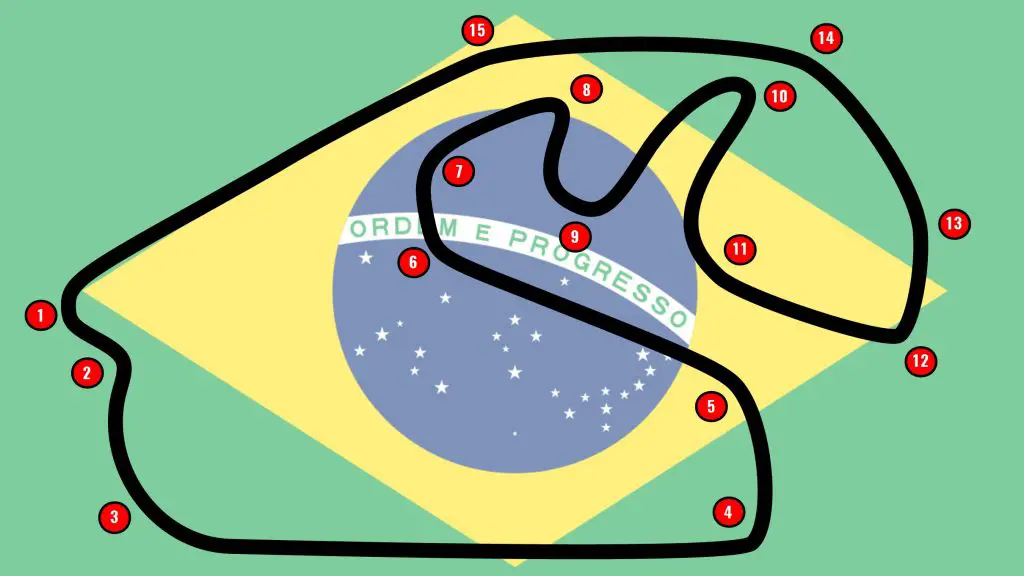
South American drivers won the Brazilian Grand Prix on all but two occasions in the 1970s. The track was renowned for being unforgiving and the track surface was at times difficult to master. The state of the surface was a talking point in the late seventies, and the Brazilian Grand Prix moved to the Jacarepaguá circuit in Rio de Janeiro for 1978 while renovations at Interlagos were carried out. F1 returned in 1979 to a track which had been resurfaced and had new facilities.
The two tracks – Interlagos and Jacarepaguá – were contracted to alternate hosting the Grand Prix, but the latter had begun to sink into the swampland it was built in, so the Brazilian Grand Prix remained at Interlagos for 1980. Some were still unhappy with the nature of the track’s bumpy surface and, with F1 now being presented to a global TV audience, some felt the unglamorous surroundings of Interlagos did not fit with the sport’s image. Dissatisfied with the surroundings and the lack of safety, the Brazilian Grand Prix moved back to the Rio de Janeiro circuit for the rest of the 1980s.
Interlagos has been the permanent home of the Brazilian Grand Prix since the sport returned to the track in 1990. When the track returned, it had been significantly shortened in length, from five miles to 2.7 miles, and renovations at the cost of $15 million had been carried out. There used to be an extra loop of the track which headed straight on at the first turn, before joining up with the current track at the Ferradura corner. The return of F1 to Sao Paulo was largely due to the superstar status of Sao Paulo-born Ayrton Senna.
Though more regularly known as Interlagos, the track is actually named Autódromo José Carlos Pace, in honour of Carlos Pace, a Brazilian driver who won at the track in 1975. The circuit was re-named in his honour after he was killed in a plane crash in 1977.
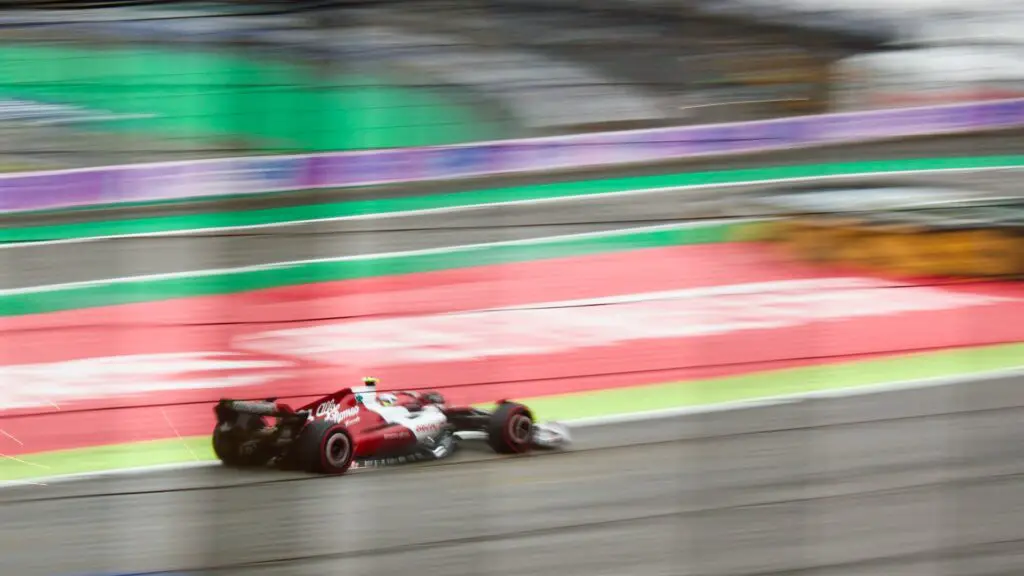
Interlagos has seen little change since 1990, though the asphalt was taken up and resurfaced in 2007, with the pit entrance also being slightly altered to improve safety. Changes to the track were planned in 2011 following a number of fatal accidents in other categories of motorsport, but the changes – which included extending the run-off area at the exit of the final turn and moving the pits to the straight between the Senna-S and Curva do Sol – never came to fruition.
The Grand Prix used to be held towards the start of the season, but switched to the back-end of the calendar in 2004, and has since seen multiple championships decided in highly dramatic races. Fernando Alonso, Kimi Raikkonen, Lewis Hamilton and Sebastian Vettel have all been crowned World Champions at Interlagos.
The Brazilian Grand Prix has seen some controversy in recent years, with drivers and team personnel falling victim to a spate of targeted robberies. With Brazil’s struggling economy, the future of the Brazilian Grand Prix always seems to have some doubt over it.
Despite the threat of a new track in Rio de Janeiro, and the 2020 event being cancelled due to the coronavirus pandemic, Interlagos appeared on the schedule once again in 2021, this time with the new title of the Sao Paulo Grand Prix. In November 2020, the governor of Sao Paulo revealed that race organisers had signed a new five-year deal to keep the track on the calendar.
LEARN MORE ABOUT INTERLAGOS
DID YOU KNOW?
The Interlagos track was one of the first on the F1 calendar to run anti-clockwise.
2024 SAO PAULO GRAND PRIX RECAP
Verstappen won the wet 2024 Sao Paulo Grand Prix from 17th on the grid, while Alpine secured an unlikely double podium result.
For the fourth year in succession, Interlagos hosted Formula 1’s Sprint format at the 2024 Sao Paulo Grand Prix. Due to illness, Kevin Magnussen was replaced by Ollie Bearman at Haas for the weekend.
Bearman impressed in Sprint Qualifying on Friday afternoon but a mistake in SQ3 saw him qualify no higher than tenth. Lewis Hamilton and Sergio Perez were both eliminated in SQ2 but it was McLaren who were on form. Oscar Piastri secured pole for the Saturday race, heading a papaya front row lock-out.
At the start of the Sprint on Saturday, Piastri maintained his lead ahead of Lando Norris, while Max Verstappen challenged Charles Leclerc behind. The top four remained close throughout the opening stages, with the gap diminishing further as the Sprint progressed. On Lap 18 of 24, Verstappen finally made his move on Leclerc. That prompted a switch of position for the McLaren drivers.
Just after Nico Hulkenberg came to a halt out on track, Piastri allowed team-mate Norris through into the lead to help his championship challenge on Lap 22 – as had been expected heading into the race. A VSC was then deployed to clear the stricken Haas. Racing resumed on the final lap but Verstappen was not close enough to mount a serious challenge on the McLaren drivers. Norris claimed his first-ever Sprint victory and though Verstappen finished third on the road he was later demoted to fourth in the result after picking up a five-second penalty for an infringement under VSC conditions.
After the Sprint, the weather conditions became too wet to drive in. It meant that qualifying was postponed to Sunday morning. Despite the delay, it was still raining when qualifying took place at 7:30am – but the conditions were at least drivable.
The qualifying session saw no fewer than five red flag periods. Franco Colapinto – who had big support from Argentine fans in the grandstands – was first to crash out in Q1. Carlos Sainz crashed in Q2, necessitating a pit lane start, while Lance Stroll found himself in the barriers in the closing stages of the session. A red flag brought a slightly early end to Q2, with both Red Bulls exiting as a result.
There were further red flags in Q3, as Fernando Alonso crashed out and Alex Albon – who had set the early pace – crashed heavily at the end of the main straight. The damage to Albon’s car meant that he was unable to take part in the race. Lando Norris secured pole position in the unpredictable session, ahead of George Russell. Both RB drivers lined up in the top five, with Esteban Ocon on the second row with Alpine.
Verstappen headed into the weekend with a five-place grid penalty due to changes to his power unit, which dropped him to 17th on the grid following his Q2 exit. There was an aborted start to the race after Lance Stroll got himself beached in the gravel on the formation lap.
Russell took the lead when the race eventually began, with plenty of midfield passes in the tricky damp conditions. Sergio Perez spun his Red Bull on the opening lap, dropping near the back of the field. Verstappen scythed his way into the top ten at the end of the main straight on Lap 2, while Bearman picked up a ten-second penalty following a collision with Colapinto.
Verstappen ran in the top seven by Lap 10 and continued his run through the field. Piastri and Liam Lawson made contact, with the McLaren driver receiving a ten-second penalty for the incident. Hulkenberg spun on Lap 27 leading to a Virtual Safety Car period. As the rain intensified, drivers began to pit for wet tyres, having started on intermediates. Norris passed Russell for what would have been the net lead, before the Safety Car was called out on Lap 31. One lap later, Colapinto crashed into the wall leading to a red flag period.
The red flag benefited those drivers – namely Ocon, Verstappen and Pierre Gasly – who had not yet pitted. During the red flag period, Hulkenberg was black-flagged as a result of receiving assistance from marshals when re-joining the track.
When racing resumed, it did so with Ocon as the race leader. Bearman nudged the barriers with a spin off track before Sainz’s race came to an end with a heavier hit into the barriers on Lap 39. It resulted in a Safety Car period, after which Ocon came under pressure from Verstappen. The Red Bull driver took the lead at Turn 1, while title rival Lando Norris slid off track and down to seventh place.
The order at the front would remain the same through to the chequered flag. Verstappen won from 17th on the grid – the furthest back win in Formula 1 in almost 20 years. Alpine, who had not had a top eight finish in the previous 20 races, saw both cars finish in the top three. Leclerc and Russell followed them over the line, while polesitter Norris could finish no higher than sixth.
2023 SAO PAULO GRAND PRIX RECAP
Verstappen took his 17th win of the season at the 2023 Sao Paulo Grand Prix in a race which will be remembered for the last lap battle between Alonso and Perez.
Interlagos hosted the final Sprint weekend of the 2023 season, so qualifying for the Grand Prix took place under ever-darkening skies on Friday afternoon. Max Verstappen secured the fastest lap time in the opening minutes of Q3, while his closest challenger Oscar Piastri had an off-track excursion in the final sector before the heavens opened. Such was the intensity of the rain, the session was red-flagged.
The weather had brightened come the Sprint Shootout on Saturday morning. SQ1 was punctuated by a red flag period following a collision between Fernando Alonso and Esteban Ocon, which saw the Alpine head into the barriers. McLaren’s pace was proving to be a challenge to Red Bull on Friday and that continued on Saturday. Lando Norris set the fastest lap time in SQ3 to take his first pole position – albeit for a Sprint rather than a Grand Prix – in over two years.
Norris and Verstappen lined up on the front row at the start of the Sprint and by Turn 1, Verstappen had taken the lead while both Mercedes drivers passed Sergio Perez through the opening corners. George Russell was soon on the tail of Norris’ McLaren and an audacious move saw him take second place, while Perez re-passed Lewis Hamilton for fourth.
On Lap 5, Norris re-took second place from Russell, while Perez followed the McLaren driver through three laps later; only for Russell to then re-pass him. At a track which famously promotes overtaking, there were plenty of passes taking place throughout the field.
Despite Norris closing to nearly within DRS range of Verstappen with around ten laps of the Sprint remaining, the race leader extended his advantage slightly and secured the final Sprint win of the year. Perez finished third, with Russell fourth and both Charles Leclerc and Yuki Tsunoda passing Hamilton in the closing stages.
Charles Leclerc crashed on his way to the grid ahead of Sunday’s Sao Paulo Grand Prix. That meant that Verstappen was the only front row starter, giving him a clear run to Turn 1 as race leader. Further back, there was a collision between Alex Albon and Kevin Magnussen, which eliminated both drivers from the race. Daniel Ricciardo’s rear wing was hit by debris, causing damage.
The red flag was shown as a result of the crash, under which repairs could take place to the damaged cars which had not retired – namely Ricciardo and Oscar Piastri. Both drivers were shown as a lap down when racing resumed.
The race restarted with a standing start on Lap 4. This time, Verstappen had Norris on the front row alongside him but was still able to hold a comfortable lead. Fernando Alonso made up a position, passing Hamilton for third at Turn 4.
Norris remained on Verstappen’s tail and challenged him for the lead at the start of Lap 8. The challenge was fruitless and the McLaren soon dropped out of DRS range. Perez and Russell went wheel-to-wheel on Lap 14 as the Red Bull driver made up a position. He gained another four laps later, this time passing the other Mercedes.
The Mercedes drivers continued to lose positions on a day to forget, while Verstappen continued to extend his lead out at the front. Russell retired on Lap 59. The latter stages were dominated by a battle for the final podium position between Perez and Alonso. Alonso had held his position despite intense pressure from the Mexican until the final lap. Perez got ahead midway around the lap only to be passed once more by Alonso in a drag race to the finish line.
Alonso secured third place by just 0.053 seconds, while Verstappen claimed his 17th Grand Prix victory of the 2023 season by finishing eight seconds ahead of Norris.
2022 SAO PAULO GRAND PRIX RECAP
A thrilling race weekend at Interlagos saw Magnussen and Haas take their maiden pole position, while Russell dominated the race to take his first Formula 1 victory.
Wet weather crept in over Interlagos as Friday’s qualifying session began. The session began in wet conditions, but drivers had switched to slick compounds by the end of Q1. While Q2 stayed mostly dry, showers towards the end of the session set up a thrilling Q3.
Kevin Magnussen set the fastest time early on in the session, which was red flagged just 60 seconds later as George Russell beached his Mercedes in the gravel in worsening conditions. The rain continued and when the session resumed no drivers were able to improve their lap time – meaning Magnussen and the Haas team took their first ever pole position in Formula 1.
Magnussen started Saturday’s Sprint at Interlagos from the front of the grid and was able to hold off Max Verstappen in the opening laps. The Red Bull took the lead on Lap 3. Behind them, the two Alpine drivers made contact multiple times on the opening lap and both dropped out of the top ten in the final order as a result.
Alpine weren’t the only team with unhappy team-mates, with Lance Stroll causing team-mate Sebastian Vettel to take avoiding action. The incident earned Stroll a ten-second penalty. Back at the front, Magnussen began to drop down the order with George Russell and Carlos Sainz passing the Haas in quick succession. Magnussen eventually finished the Sprint eighth.
On Lap 12 of 24, Russell went wheel-to-wheel with Verstappen for the lead. He couldn’t immediately find a way by but, after a three lap scrap, Russell took the lead and with it secured the pole position grid slot for Sunday’s race. Verstappen soon came under pressure from Sainz. The Ferrari passed and the Red Bull picked up front wing damage. Lewis Hamilton capitalised and moved up to third – which became a front row start thanks a power unit penalty for Sainz.
The Mercedes took a healthy lead at the start, while Friday’s star Magnussen was eliminated on the opening lap in a collision with Daniel Ricciardo. That prompted a Safety Car deployment. At the restart, Verstappen made a move on Hamilton for second place only to run out of road and earn himself a time penalty.
McLaren’s bad day continued as Lando Norris made contact with Charles Leclerc – the Ferrari driver lucky to be able to continue in the race. Norris also picked up a penalty for the incident but would retire later in the race with gearbox issues.
Hamilton dropped down the field in his incident with Verstappen but soon made up positions and took the lead when his team-mate pitted. The more experienced Mercedes driver had to pass Sergio Perez on track for second place.
A further Safety Car period for Norris’ stoppage enabled Sainz – one of few drivers on a three-stop strategy – to make an effective final stop, putting him in contention for a podium finish. The Spaniard passed Perez with eight laps remaining.
Out at the front, Russell held off team-mate Hamilton to take the maiden victory of his Formula 1 career. Mercedes recorded their first 1-2 finish in over two years, while British drivers finished first and second for the first time since the 2010 Canadian Grand Prix. This was Mercedes’ only victory in the 2022 season.
Verstappen made up positions in the final stages as Perez dropped position in the later laps. Verstappen got ahead of his team-mate and was expected to let him back past at the final corner to aid the Mexican’s battle for second in the standings. Verstappen failed to oblige.
2021 SAO PAULO GRAND PRIX RECAP
The championship battle heated up on and off track at the Sao Paulo Grand Prix with a typically dramatic weekend at Interlagos, where Lewis Hamilton fought back twice to take victory.
In Formula 1’s third Sprint Qualifying weekend of the season, Lewis Hamilton set the fastest time in Friday’s conventional qualifying session at Interlagos. However, the Mercedes driver was disqualified from the session for a DRS infringement. Max Verstappen was also fined €50,000 for touching Hamilton’s rear wing in parc fermé.
Controversies aside, and after a Free Practice 2 session in which Fernando Alonso set the fastest time, Hamilton started from the back of the grid while Verstappen led the field away from pole in Sprint Qualifying. However, his lead did not last long. Valtteri Bottas overtook at Turn 1 and went on to secure pole position for Sunday’s Grand Prix. Carlos Sainz almost found his way past Verstappen, but the Red Bull driver later took the place back.
All eyes were on Hamilton in Sprint Qualifying, who fought back from the rear of the grid to fifth. He incurred a further five place penalty for the Grand Prix after taking on a new internal combustion engine. He started the race from tenth on the grid.
As the Sao Paulo Grand Prix began on Sunday afternoon, Lando Norris picked up a puncture after contact with former team-mate Carlos Sainz. In a reverse of Saturday’s Sprint Qualifying, Verstappen took the lead from Bottas at Turn 1. After a wide moment for Bottas, Sergio Perez made it a Red Bull 1-2. Hamilton repeated his overtaking show, with him getting up into fourth after just ten laps and disrupting Red Bull’s 1-2 by overtaking Perez on Lap 19.
Bottas pitted under Virtual Safety Car conditions, allowing him to get back ahead of Perez and secure the final podium position. Out at the front, Hamilton closed in on Verstappen. Verstappen ran both cars off the track in an incident which was deemed not to be worthy of investigation. Hamilton made a more successful attempt a handful of laps later, with a race-winning move for the Mercedes driver.
2019 BRAZILIAN GRAND PRIX RECAP
A memorable race at Interlagos for the 2019 Brazilian Grand Prix saw Max Verstappen win from pole position as Pierre Gasly and Carlos Sainz took their maiden podium finishes.
Carlos Sainz suffered an early exit from qualifying for the 2019 Brazilian Grand Prix, with engine troubles seeing him start from the back of the grid. It was Max Verstappen who took pole position at Interlagos, lapping 0.123 seconds faster than Sebastian Vettel, who started alongside him on the front row.
At Turn 1, Lewis Hamilton swept by Vettel for second place as Verstappen maintained his lead up front. Charles Leclerc, who started from fourteenth following an engine penalty, made gains on the first lap. Lando Norris and Daniel Ricciardo battled over eleventh place, and a few laps later Ricciardo collided with Kevin Magnussen’s Haas as he attempted an overtake.
Hamilton was first of the front-runners to pit, followed one lap later by Verstappen. The Red Bull driver was caught up in the pit-lane by Robert Kubica, with the pair almost colliding. That led to Verstappen emerging from the pit-lane behind Hamilton – but Verstappen made a bold move at the first turn on the next lap to re-assume the lead.
After a 25 lap lull in proceedings, Valtteri Bottas retired from the race with a smoking engine, leading to a Safety Car period. Verstappen pitted, while Hamilton stayed out. The free pit stop gave Verstappen fresh rubber while allowing him to stay right on Hamilton’s tail at the restart. The pair went wheel to wheel again at Turn 1, with Verstappen again coming out on top. Behind them, Alex Albon passed Vettel for third place.
That left the Ferrari pair running together, and disaster struck for the team a few laps later as the pair collided, ending both of their races. The safety car came out again, and it was a Red Bull 1-2-3 at the restart, with Pierre Gasly’s Toro Rosso in third place. Hamilton was soon by Gasly, and set about finding a way past Albon. But a mistake from the World Champion saw him collide with the Red Bull, allowing Gasly back through to an unlikely second place.
Hamilton tried to fight the Toro Rosso, but Gasly held on to finish second behind Verstappen, taking the first podium finish of his career. Hamilton finished third, but a post-race penalty for his incident with Albon saw him demoted to seventh in the final order. All of that led to Sainz – who had started last – being promoted to the final podium spot, scoring McLaren’s first top three finish in over five years.
2018 BRAZILIAN GRAND PRIX RECAP
Mercedes claimed the Constructors’ Championship as Lewis Hamilton took victory. The main talking point was the on and off-track contact between Max Verstappen and Esteban Ocon.
With rain in the air, there was drama on Saturday as Sebastian Vettel received a hefty fine for breaking the FIA’s weighing scales. The rain helped to switch the order up slightly, with Marcus Ericsson qualifying a best-ever seventh.
It was Lewis Hamilton who started from pole though, and he maintained his advantage on the first lap. Meanwhile, Max Verstappen put on another overtaking display and was soon on the tail of Hamilton. The Dutchman became the race leader and continued to set fast laps as the Mercedes driver pitted. Verstappen later pitted, but emerged behind Hamilton after a slow pit-stop. Nevertheless, four laps later, the Red Bull driver was in the lead once again after a pass on Hamilton on the main straight.
On the 44th lap, Verstappen collided with Esteban Ocon, who was attempting to un-lap himself. The resulting spin allowed Hamilton back into the lead. The Force India driver received a ten-second stop/go penalty for the incident. Behind them, Vettel and Daniel Ricciardo scrapped for fifth place, with Ricciardo soon passing Bottas for fourth.
Hamilton won the race, with a disgruntled Verstappen finishing second and Kimi Raikkonen completing the podium. The result saw Mercedes clinch the Constructors’ Championship. After the race, Verstappen headed to the weighing area to seek out Ocon and later received disciplinary action from the FIA for shoving the Force India driver.
INTERLAGOS WINNERS AND POLESITTERS
Year | Polesitter | Team On Pole | Winner | Winning Team |
|---|---|---|---|---|
1973 | Ronnie Peterson | Lotus | Emerson Fittipaldi | Lotus |
1974 | Emerson Fittipaldi | McLaren | Emerson Fittipaldi | McLaren |
1975 | Jean-Pierre Jarier | Shadow | Carlos Pace | Brabham |
1976 | James Hunt | McLaren | Niki Lauda | Ferrari |
1977 | James Hunt | McLaren | Carlos Reutemann | Ferrari |
1979 | Jacques Laffite | Ligier | Jacques Laffite | Ligier |
1980 | Jean-Pierre Jabouille | Renault | René Arnoux | Renault |
1990 | Ayrton Senna | McLaren | Alain Prost | Ferrari |
1991 | Ayrton Senna | McLaren | Ayrton Senna | McLaren |
1992 | Nigel Mansell | Williams | Nigel Mansell | Williams |
1993 | Alain Prost | Williams | Ayrton Senna | McLaren |
1994 | Ayrton Senna | Williams | Michael Schumacher | Benetton |
1995 | Damon Hill | Williams | Michael Schumacher | Benetton |
1996 | Damon Hill | Williams | Damon Hill | Williams |
1997 | Jacques Villeneuve | Williams | Jacques Villeneuve | Williams |
1998 | Mika Häkkinen | McLaren | Mika Häkkinen | McLaren |
1999 | Mika Häkkinen | McLaren | Mika Häkkinen | McLaren |
2000 | Mika Häkkinen | McLaren | Michael Schumacher | Ferrari |
2001 | Michael Schumacher | Ferrari | David Coulthard | McLaren |
2002 | Juan Pablo Montoya | Williams | Michael Schumacher | Ferrari |
2003 | Rubens Barrichello | Ferrari | Giancarlo Fisichella | Jordan |
2004 | Rubens Barrichello | Ferrari | Juan Pablo Montoya | Williams |
2005 | Fernando Alonso | Renault | Juan Pablo Montoya | McLaren |
2006 | Felipe Massa | Ferrari | Felipe Massa | Ferrari |
2007 | Felipe Massa | Ferrari | Kimi Räikkönen | Ferrari |
2008 | Felipe Massa | Ferrari | Felipe Massa | Ferrari |
2009 | Rubens Barrichello | Brawn | Mark Webber | Red Bull |
2010 | Nico Hulkenberg | Williams | Sebastian Vettel | Red Bull |
2011 | Sebastian Vettel | Red Bull | Mark Webber | Red Bull |
2012 | Lewis Hamilton | McLaren | Jenson Button | McLaren |
2013 | Sebastian Vettel | Red Bull | Sebastian Vettel | Red Bull |
2014 | Nico Rosberg | Mercedes | Nico Rosberg | Mercedes |
2015 | Nico Rosberg | Mercedes | Nico Rosberg | Mercedes |
2016 | Lewis Hamilton | Mercedes | Lewis Hamilton | Mercedes |
2017 | Valtteri Bottas | Mercedes | Sebastian Vettel | Ferrari |
2018 | Lewis Hamilton | Mercedes | Lewis Hamilton | Mercedes |
2019 | Max Verstappen | Red Bull | Max Verstappen | Red Bull |
2021 | Valtteri Bottas | Mercedes | Lewis Hamilton | Mercedes |
2022 | George Russell | Mercedes | George Russell | Mercedes |
2023 | Max Verstappen | Red Bull | Max Verstappen | Red Bull |
2024 | Lando Norris | McLaren | Max Verstappen | Red Bull |

